#Community-based ecotourism
Explore tagged Tumblr posts
Text

Explore the benefits of ecotourism and how it promotes sustainable travel. Discover how ecotourism supports conservation and local communities.
Do Visit: https://bharatvarshnaturefarms.com/the-benefits-of-ecotourism-sustainable/
#Ecotourism benefits#Sustainable travel practices#Environmental conservation tourism#Economic impact of ecotourism#Cultural preservation through tourism#Eco-friendly travel destinations#Responsible tourism initiatives#Community-based ecotourism#Sustainable tourism development#Educational ecotourism experiences
2 notes
·
View notes
Text
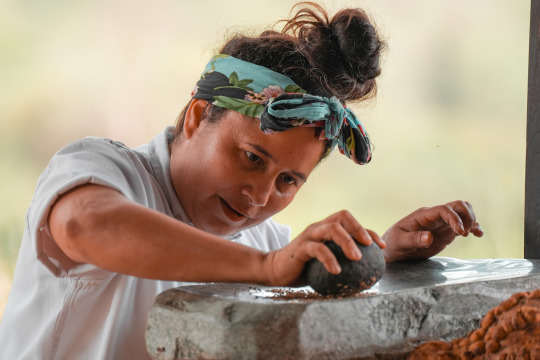
Food as a catalyst to rebuild a community
Ecuador’s Project Iche houses a culinary school, restaurant and food lab that aims for social good
The initiative aims to impart ancient culinary traditions to a new generation of Ecuadorian chefs and curious diners, while also empowering the local community and creating a stronger economy.
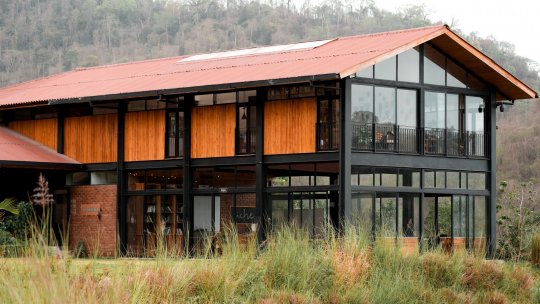
Ask any Ecuadorian about their country's favorite local cuisine, and the answer is almost always the same without exception: Manabí, a coastal area known for its traditional cuisine. In 2016 the Manabí region was devastated by an earthquake measuring 7.8 on the Richter scale. More than 650 people were killed, over 16,000 injured and more than 35,000 homes were leveled.
Project Iche began as a response to rebuild Manabí by using food as a catalyst for growth. If there is one thing that brings together the Manabitan people, it’s food. And at Iche, they are bringing together tradition and innovation. The project touches on food in a myriad of ways: from growing vegetables and fresh herbs in the garden, to serving dishes in the restaurant. From product development in the laboratory, to teaching young chefs new skills and ancient cooking techniques, the project captures ancestral knowledge and recipes that until now, have primarily been conveyed by oral tradition. At Iche, students are taught the fundamentals of sustainable food production, and how to acknowledge their responsibility in upholding patrimonial food traditions. Lessons focus on how food provides a means to develop a strong economy that is built around ecotourism and gastronomy.
“Food can be a powerful tool to reactivate the economy, increase people’s self-esteem and unleash hope and creativity.”
Iche was founded in 2021 by Orazio Bellettini, a Manabí native. Bellettini was the executive director of Quito-based Grupo FARO, a think tank conducting research on how to build a more inclusive society. When the 2016 earthquake struck “the local economy was completely destroyed, and people were left without homes or hope. I felt a strong responsibility to help” Bellettini explains in an interview for National Geographic. He invested heavily into Project Iche, a one-stop-shop for developing and preserving Manabí cuisine.
20 notes
·
View notes
Text
yeah...this man as my concept basis for a revised Nuru Kungurama--Kivu'rama'nuruodo...I mean, with red sclera/irisis/blue skin/black hair...

...the cousin of Thrawn/Thrass/Borika, by their father's brother...
-Persona/based off Original Nuru/now known as Rama (with a tie-in to the Hindu Rama, or the Ramayana...), and a mesh of young, James T Kirk brilliance/rebelliousness, preStar-Fleet days (2009 Trek movie), and Will Hunting, from Good Will Hunting (the genius talent/orphan/displaced/humble-origins/anti-establishment/rebel in the underclass-sort)-who, crossing paths with THrawn as JodoKast in my AU (combining events from SideTrip and TatooineGhost), gives the FcuckYou to Thrawn about joing the Mith Household Phalanx, hates everything about Chiss society which sent him off as an exile-hates that his older cousin, now the Supreme Commander of the Empire of the Hand/and Imperial Remnant, served the jackASS, Palpatine, who authorized the massacre of the only family Rama had when he'd been discovered in the stasis-pod by the Jedi, and left to make his own way after Order66. Contra the est lore of Nuru/Rama, finds employment as the procurer of a biomodification shop in MOs Vespa (reformed MosEspa, w/ a tie-in of Princess Vespa as a business investor reshaping MosEspa into an ecoTourism resort for transwormerhole vacationers from the TerranQuadrant)--and having encountered AU, Kaltoi OFC in her pursuit of biohacked gene sequences which led her, temporarily to Tatooine, gets some RobinWilliams style/patient Father-figure advice from BobaFett one evening after OFC has left Tatooine on her wild goose chase w/ Luke (post RotJ years/)-and Fett senses Rama's awakened ideslism/restlessness as thoughts keep wondering back to a certain biokinetically gifted, advanced practice medic who touched the lives of MosVespa w/ her charity clinic/and community initiatives in the few months she'd set up shop on Tatooine. Where Rama asks Fett what led him to eventually bury the warrior ethos of his culture, and settle down. And Fett, w/ glance to Fennec Shand, offers wryly, "Isn't it obvious, lad--[lad is like, mid 30s, but whatever]--I went chasing off after a girl..."--
Also, PeterEggers is just hot...and I don't think Nuru'Kungurama gets enough love...Now, Kivu'Rama'nuruodo...(my blurring of EU and canon revised Chiss naming conventions...)
#Thrawn#Rhyanon ferch Garowen#Nuru Kungurama#Star Wars#Firefly-Serenity#the Keltiad#AU Crossover#might become original space opera one day
3 notes
·
View notes
Text


Best Ghana Tours offers a variety of curated experiences to help visitors embrace the outdoors in Ghana. Here are some of our popular tours and activities that highlight the natural beauty, wildlife, and cultural heritage of the country:
1. Wildlife and Nature Tours
- Kakum National Park Canopy Walkway Tour: Explore the dense rainforest and traverse the famous canopy walkway for breathtaking views and wildlife spotting.
- Mole National Park Safari: Embark on a guided safari to see elephants, antelopes, and other wildlife in their natural habitat.
2. Beach Tours
- Cape Coast and Elmina Beach Excursion: Relax on the beautiful beaches of Cape Coast and Elmina, and visit historical sites like the Cape Coast Castle and Elmina Castle.
- Busua Beach Getaway: Enjoy a serene beach experience with opportunities for surfing and other water sports.
3. Waterfall and Mountain Tours
- Wli Waterfalls Hiking Tour: Hike through lush forests to reach the spectacular Wli Waterfalls, the highest in West Africa.
- Mount Afadja Climbing Adventure: Challenge yourself with a hike up Mount Afadja, the highest peak in Ghana, for stunning panoramic views.
4. Cultural and Historical Tours
- Nzulezo Stilt Village Tour: Visit the unique stilt village on Lake Tadane and learn about the traditional way of life.
- Kumasi Historical and Cultural Tour: Explore the cultural heart of the Ashanti region, including visits to the Manhyia Palace and the Kumasi Central Market.
5. Adventure and Ecotourism
- Volta River Kayaking and Boating: Engage in water sports like kayaking and boating on the Volta River, surrounded by beautiful scenery.
- Lake Bosomtwe Eco-Adventure: Enjoy activities such as boating and hiking around Lake Bosomtwe, a tranquil crater lake near Kumasi.
6. Community-Based Tourism
- Tafi Atome Monkey Sanctuary Visit: Interact with Mona monkeys in a protected sanctuary and learn about local conservation efforts.
- Paga Crocodile Pond Experience: Get up close with crocodiles in the town of Paga, where you can see these reptiles in a natural pond setting.
7. Local Markets and Festivals
- Accra City Tour and Makola Market Visit: Explore the bustling capital city and visit the vibrant Makola Market for a taste of local life.
- Traditional Festival Participation: Join in the festivities of traditional Ghanaian celebrations such as the Akwasidae, Homowo, or Hogbetsotso festivals, which feature music, dance, and cultural performances.
8. Custom and Private Tours
- Personalized Itineraries: Best Ghana Tours offers customizable tours to cater to your specific interests and schedule, ensuring a personalized and memorable experience.
These tours are designed to give you an immersive and comprehensive outdoor experience in Ghana, whether you're interested in nature, adventure, culture, or history.
#africa#travel#larabanga#molenationalpark#ourjourneydoesnotendhere#ghana#africadairies#bestghanatours#wildlife#travelphotography#traveling#travelblogger#travel blog#landscape#vacation#holiday#summer#adventure#beach#explore#visitghana#safari#nature#wildlifephotography#europe#planet#blacktravel#black and white#black women#travelmotivation
4 notes
·
View notes
Text
The Enduring Spirit of the Maasai People
The Maasai people, with their vibrant red shukas (robes) and rich cultural traditions, are a captivating aspect of East Africa. Inhabiting parts of Kenya and northern Tanzania, they've captured the world's imagination for centuries. Let's delve into their fascinating world and explore what makes them unique.
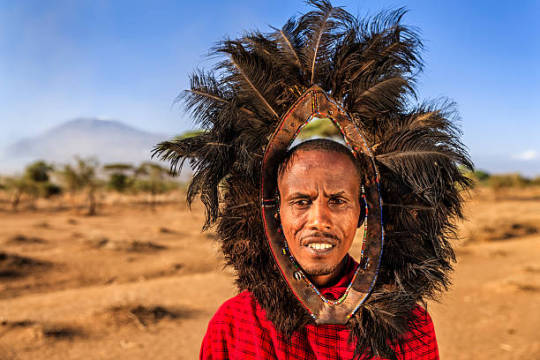
A Legacy of Pastoralism
Traditionally, the Maasai are semi-nomadic pastoralists. Their lives revolve around herding cattle, sheep, and goats. These animals are central to their way of life, providing sustenance, social status, and dowries for marriage. The Maasai have an intimate understanding of their environment, moving their herds to find the best grazing lands based on seasonal changes.
Deeply Rooted Traditions
Maasai society is complex and age-based. Men progress through a series of age sets, each with specific roles and responsibilities. Young warriors, known as Moran, are known for their bravery and elaborate beadwork. Women play a crucial role in building and managing the communities (manyattas) and raising children.
Living in Harmony with Nature
The Maasai have a deep respect for nature, believing in a strong connection between themselves, their livestock, and the land. Their traditional religion emphasizes living in balance with the environment. This respect is evident in their intricate understanding of wildlife behavior, allowing them to coexist with animals like lions and zebras.
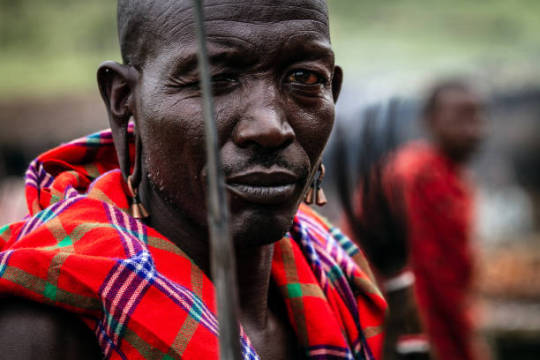
Facing the Winds of Change
The Maasai way of life faces challenges in the modern world. Encroachment on their grazing lands, drought, and the lure of a more sedentary lifestyle threaten their traditional practices. However, the Maasai are a resilient people. Many communities are adapting, engaging in ecotourism and cultural preservation efforts to secure their future.
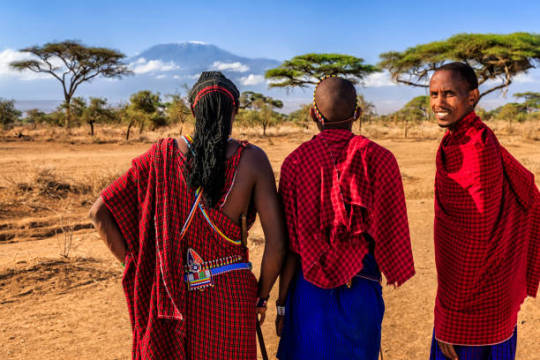
Experiencing the Maasai Culture
If you're fortunate enough to visit East Africa, consider visiting a Maasai community. Witnessing their dances, learning about their traditions, and supporting their businesses can provide a glimpse into their remarkable culture and contribute to its preservation.
The Maasai people are a testament to the power of tradition and resilience. Their enduring spirit and respect for nature are an inspiration for us all.
#ugandian knuckles#tourist#tourism#wild animals#tour#Adventure#photography#beach#safari#africa#Nairobi#Uganda#Kenya#Masai Mara#beaches#Wanderlust#east africa#Travel Photography#travel blog#tanzania#tanned#zanzibar#tangled#tanzanite#kenyan#kenya moore#beachlife#Kenya Safari#Nairob#travel
3 notes
·
View notes
Text
"VOGUE OF DIGITAL ADVANCEMENT: THE SIGNIFICANCE OF TECHNOLOGICAL EXISTENCE FOR TRAVELERS’ UNPRECEDENTED EXPERIENCE"
Modern tourism and hospitality businesses are significantly swayed by technology, and it is predicted that it will mold the future of the said industries. In the past years, there have been numerous trends that emerged because of the COVID-19 outburst that make tourism products and services still available as well as more convenient to be utilized and consumed by its potential clients and workers.
Thus, we can conclude that travel preferences and demand will be influenced by current demographic trends, which will also have an impact on the structure and operations of the constant sector as well as its ability to grow sustainably. In line with that, it is based on the fact that in the next few years, more trends will rise and pave the way for the aforementioned industries to become more prosperous.

One of the trends that exist is the Virtual Travel Experience, which has increased the market for entertainment since past years. However, some specialists in the tourism industry already knew it to be one of the most promising travel trends lend by technology. In line with that, it can allow the traveler to digitally get into the virtual surroundings of the place he or she is supposed to visit, whether it’s a hotel or even an attraction.

In addition, there’s a Contactless Booking and Payment that emerged, which means that tourism and hospitality facilities that provide seamless and contactless payment and reservation options will be the must-visit destinations for travelers who are still hesitant to use cash or card machines for payments and other transactions.

In line with the previous trend, here comes the Tech-Empowered Facilitators as a part of the recent trends. This type of trend has integrated itself into the tourism and hospitality industry with innovative products that allow its users to easily facilitate their travel needs with the utilization of their own technologies and the aid of sophisticated and smart software.

Other trends that emerged include travels concerning the environment, which are Sustainable Tourism as well as Active Ecotourism.
Sustainable Tourism, to simply say, as the government concerning the tourism industry and even foreign or local visitors become more aware of the recent pandemic as well as its destructing effects, they start to feel that people must act and choose sustainable travel options in order to reclaim the natural world and preserve it for succeeding generations. On the other hand, Active Ecotourism is another trend that has evolved in response to the need for more environmentally conscious and conscientious travel. Here, it summons people to unify their love of travel with direct involvement in conservation and community services.
In addition, in line with the current trends, there are possible immense opportunities for tourism and hospitality industry to become well-heeled together with the future trends. These trends include the Metaverse Travel (adaptation from VR travel but it provides more exceptional experience), Continuity of Bleisure, and the Increase of Digital Nomads.

For Metaverse Travels, the introduction of it will change the way of how people approach travel due the existence of some cases of pandemic. Even when the restrictions are lifted, the risk and concern that it posed to certain tourists has caused them to change their typical travel strategy. This trend will enable and provide individuals with safer travel options, as well as a less expensive method to explore. In the real world, this phenomenon may fill the tourism niche in the next generation.

Next future trend could be the Continuity of Bleisure where travelers are permitted to enjoy their exploration while working at the same time. In reality, this trend is projected to continue and companies must up to the challenge of leveraging this opportunity by providing convenient and comfortable facilities for both leisure and business travelers.

Lastly, the Increase of Digital Nomads, which is somehow linked to the aforementioned trend. In regards with the previous pandemic, it demonstrated that remote work was possible, paving the way for a new generation of workers to travel while working. By reeling remote workers, every tourism and hospitality firm is expanding into a new market segment that will become increasingly essential as a target group for their marketing efforts.
Disclaimer: No copyright infringement intended. I do not own the images in this post. They belong to their rightful owners.
2 notes
·
View notes
Link
2 notes
·
View notes
Text
FSC Certification in Developing Countries: Empowering Local Communities

The forests are the most treasured assets of the planet, and contribute to the biodiversity of our planet, clean air, and climate control. In countries that are developing, the natural wonders of nature typically play a vital role in providing sources of income and resources for communities living in the area. However, the misuse of forests that are not properly managed, and sustainable practices could cause environmental damage and financial instability.
Here is the point where FSC Certification comes in, not only to help protect our forests but also help local communities in emerging nations.
Importance of FSC Certification
It is the FSC Certification is a worldwide-acknowledged quality standard for sustainable and responsible forest practices. It establishes rigorous standards for managing forests, making sure that social, environmental and economic considerations are and integrated. Although FSC certification is typically associated with developed countries, but its impact on developing nations is just as important and, in some cases, even more.
Preserving Biodiversity
Forests in developing nations are usually filled with biodiversity, and are home to rare and endangered species. FSC Certification puts a heavy importance on the conservation of these vital ecosystems. By following FSC standards, local communities are able to conserve their native flora as well as fauna, while preserving biodiversity for the next generation. This does not only protect the environment but also assists in the growth of ecotourism, which could bring additional income to the local community.
Economic Opportunities for Local Communities
In many developing nations forest-related activities are the foundation of local economy. FSC certification supports sustainable harvesting practices that help to ensure long-term health of the forest, and ensures an economic stability for the communities. Through the application of Forest Stewardship Council Certification guidelines local communities are able to maintain an income stream that is constant which reduces their exposure to changes in the global market. This helps alleviate poverty, but also increases living standards of people in the community.
Community Ownership and Management
One of the fundamental tenets that underpins FSC Certification is participation of the community and ownership of forest operations. The certification gives local communities control over how they manage their forest, which gives them the sense of ownership and accountability. Through active participation in the decision-making process, communities can safeguard their rights and ensure that their resources are being used sustainably. FSC certification gives communities the ability to benefit of their forest resources, which puts them in charge of their future.
Education and Capacity Building
FSC Certification is a way to promote educational and capacity-building programs in the local community. The programs are designed to equip members of communities with the skills and knowledge required to implement sustainable forestry practices efficiently. The training in areas like conservation, forest management and business development enables individuals to be in control of their resources and the future of their communities. As they gain more knowledge regarding sustainable methods, they will be able to make educated decisions that have a positive impact on the environment and their personal health and well-being.
Market Access and Premium Prices
FSC-certified products typically fetch high prices on international markets. This creates a powerful incentive for communities in the developing world to invest in forestry that is sustainable practices. If they follow FSC Certification Consulting ideas, they have access to market segments that are based on sustainability. This can dramatically increase their earnings. The ability to charge more for their goods will not only boost the local economy, but also rewards the ongoing adherence to ethical methods.
Case Studies: Success Stories
A number of success stories from developing nations illustrate the transformational effect on the world by FSC accreditation on communities in the local.
For instance, Brazilian nuts harvesters who live within the heart of Amazon rainforest have accepted FSC standards, ensuring their livelihoods as well as the ecosystem. Through implementing sustainable methods of harvesting and actively assisting in the management of their resources, they've ensured their future economic security while also ensuring the sustainability for one of our largest ecosystems.
Within Africa, FSC has allowed local communities to effectively manage and harvest wood resources. By adopting responsible practices, they are able to preserve their natural resources and boost economic development. This way, FSC certification offers a win-win situation that benefits both the environment and the local community.
Challenges and Future Directions
Although FSC certification has led to positive developments, but it's not without difficulties. In some countries in the developing world in particular, the limited resources, a lack of understanding and bureaucratic barriers could hinder the application and implementation of FSC Certification Services for FSC standards.
But, many organizations, governments as well as NGOs are becoming aware of the importance of FSC certification and making efforts to overcome these issues. They're offering support and resources to assist communities to navigate this certification procedure and gain the advantages.
In the near future, the growth of FSC to developing countries is a great opportunity. If more and more local communities embrace sustainable forest practices and practices, the positive effects on their environment as well as their socio-economic circumstances will continue to increase. International collaboration and investments in capacity-building initiatives can help local communities be stewards of their forests and facilitators of positive change.
Conclusion
FSC Certification isn't only about protecting the environment, it's about helping communities in the developing world. It is a sustainable route for communities to safeguard its natural assets, develop opportunities for economic growth, and take greater control over their lives. If they follow FSC standards and practices, communities can safeguard their future and protect forest resources that are vital to their wellbeing.
The successes of communities certified by FSC in the developing world are a testimony to the efficacy of this international standard in encouraging responsible forestry practices and strengthening them all over the world.
#FSC Certification in UAE#Forest Stewardship Council Certification#FSC Certification Consulting#FSC Certification Services
2 notes
·
View notes
Text
Guardians of the Wild: How Indigenous Communities Are Leading Conservation Efforts
Indigenous communities have long been the unsung heroes of conservation, living in harmony with nature and nurturing millennia-old knowledge. Their deep-rooted connection to the land has fostered sustainable practices that benefit both the environment and their societies. At the Global Wildlife Fair, we honor these communities for safeguarding our planet's biodiversity and address the challenges they face.

The Bodo People of Raimona National Park In Assam's Raimona National Park, the Bodo community exemplifies sustainable living. Their ancestral love and respect for the forest have led to community-led conservation initiatives, including eco-tourism and forest management. These efforts preserve Raimona's rich biodiversity, home to species like the golden langur and Asian elephant, while maintaining their cultural heritage.
Markhor Guardians in Kashmir In Kashmir's remote valleys, a small community has undertaken the vital task of protecting the endangered Markhor, the region's majestic wild goat. Through community-based conservation programs, they have successfully merged wildlife protection with economic benefits. Income from sustainable activities is reinvested into the community, improving education and infrastructure. This approach has led to an increase in Markhor numbers and fostered a local commitment to nature protection.
Valmiki Tiger Reserve Communities Around Bihar's Valmiki Tiger Reserve, local communities coexist with wildlife, relying on the forest for their livelihoods. By engaging in ecotourism and sustainable lifestyle alternatives, they have reduced human-tiger conflicts. Involving locals in conservation work and providing alternative livelihood sources have enhanced protection for both tigers and the surrounding communities.
A Shared Future These stories demonstrate that integrating traditional methods into conservation strategies preserves local knowledge and cultural practices and is crucial for maintaining biodiversity. Empowering indigenous and local communities is essential for protecting our planet's wildlife. The path toward sustainable conservation is one we must walk hand in hand with those who have known these lands intimately for generations.
By recognizing and supporting the efforts of indigenous communities, we can foster a future where both Humans and Wildlife thrive in harmony.
#community conservation#conservation roles#indigenous conservation#sustainable practices#wildlife protection
0 notes
Text
Discover Nepal: A Thrilling Adventure Awaits in the Heart of the Himalayas

Nepal, a land of mystique and majesty nestled in the lap of the Himalayas, offers an unmatched blend of natural grandeur, cultural richness, and adrenaline-pumping adventures. Whether you seek to traverse ancient trails, scale iconic peaks, or immerse yourself in vibrant traditions, Nepal has something for every traveler. Explore the captivating options available in Nepal holiday packages from Dubai, customized to suit your preferences for an unforgettable journey.
1. Trekking and Hiking: Explore the Majestic Trails
Nepal is synonymous with trekking, offering some of the most iconic trails in the world. The Everest Base Camp Trek invites adventurers to walk in the footsteps of mountaineering legends, surrounded by towering peaks and sprawling glaciers. Equally captivating, the Annapurna Circuit Trek takes you through lush forests, quaint villages, and breathtaking high passes, offering panoramic views of the Annapurna and Dhaulagiri ranges.
For those seeking lesser-known trails, the Langtang Valley Trek offers serene valleys and charming Tamang villages, while the Manaslu Circuit Trek provides pristine landscapes and a more secluded experience. If time is a constraint, short hikes around Kathmandu—such as Shivapuri National Park and Nagarkot—or Pokhara’s World Peace Pagoda and Sarangkot Hill deliver stunning vistas of the Himalayas. Each step connects you to Nepal’s vibrant culture and awe-inspiring nature.
2. Mountaineering: Conquer the World’s Highest Peaks
Home to eight of the world’s fourteen highest peaks, Nepal is a haven for mountaineering enthusiasts. Mount Everest, the “Roof of the World,” stands as the ultimate challenge for climbers, demanding exceptional endurance and skill. Beyond Everest, peaks like Ama Dablam, Island Peak, and Mera Peak cater to various levels of expertise, offering exhilarating climbs paired with unparalleled Himalayan views.
Whether you’re a seasoned mountaineer or a beginner aiming to hone your skills, Nepal’s majestic peaks promise a once-in-a-lifetime adventure that leaves you breathless in every sense.
3. Cultural and City Tours: A Journey Through Time
Nepal’s cultural tapestry is as diverse as its landscapes. The Kathmandu Valley alone boasts UNESCO World Heritage Sites such as Boudhanath Stupa, Swayambhunath, and Pashupatinath Temple, each offering a glimpse into the country’s spiritual and artistic heritage. The Durbar Squares in Kathmandu, Bhaktapur, and Patan showcase intricate architecture and vibrant local markets, transporting visitors to a bygone era.
Beyond the valley, destinations like Janakpur and Pokhara add depth to cultural exploration. Janakpur’s Mithila art and the sacred Janaki Temple celebrate Nepal’s rich traditions, while Pokhara combines natural beauty with cultural landmarks like the International Mountain Museum. For an immersive experience, homestays in mountain villages like Ghandruk and Sikles allow travelers to connect with local communities, savor traditional cuisine, and participate in daily life. These cultural encounters create lasting memories and a deeper appreciation of Nepal’s heritage.
4. Jungle Safaris: Encounter Nepal’s Wild Side
Nepal’s lush forests and diverse wildlife create a paradise for nature lovers. Chitwan National Park, a UNESCO World Heritage Site, offers sightings of Bengal tigers, one-horned rhinoceroses, and an array of bird species through jeep safaris, nature walks, and canoe rides. In the quieter Bardia National Park, visitors can spot elusive creatures like the Royal Bengal tiger and Gangetic dolphins while exploring untouched wilderness.
These safaris not only provide thrilling wildlife encounters but also support ecotourism and conservation efforts, ensuring a sustainable balance between adventure and preservation.
5. Adventure Sports: Push Your Limits
For thrill-seekers, Nepal offers a playground of adventure sports. Paragliding in Pokhara lets you soar above the serene Phewa Lake with the Annapurna Range as your backdrop. White-water rafting on rivers like Trishuli and Bhote Koshi promises heart-pounding excitement amidst stunning landscapes. For those daring enough, bungee jumping from one of the world’s highest platforms near Kathmandu is an unforgettable experience.
Mountain biking, zip-lining, and kayaking further add to the adrenaline rush, ensuring that every adventurer finds their perfect challenge in Nepal. These activities offer both thrills and opportunities to marvel at Nepal’s unmatched natural beauty.
Plan Your Escape: Nepal Awaits
Nepal’s unique blend of adventure, culture, and natural beauty makes it a dream destination for travelers from all walks of life. Whether you’re scaling peaks, trekking ancient trails, or soaking in cultural heritage, every moment here is a story waiting to be told.
For travelers in the UAE, discovering the wonders of Nepal has never been easier. Explore tailored Nepal holiday packages from Dubai that offer flexibility and exclusive experiences to ensure your journey is as seamless as it is memorable.
Nepal is calling. Pack your bags, embrace the adventure, and let the magic of this Himalayan gem leave an indelible mark on your soul. With a curated package, your dream Nepal adventure is just a step away. Begin your journey today and create memories that last a lifetime.
#Nepal adventure tours#Top outdoor activities in Nepal#Cultural tours in Nepal#Trekking in Nepal Himalayas#Nepal holiday packages from Dubai#Best places to visit in Nepal#Nepal trekking and mountaineering#Wildlife safari in Nepal#Adventure sports in Nepal#Travel to Nepal from Dubai
0 notes
Text
The Power of Travel Hashtags: Boost Your Wanderlust and Engagement
Travel hashtags are a powerful tool for travelers, influencers, and brands alike. Whether you're sharing your latest adventure, looking for travel inspiration, or hoping to connect with like-minded explorers, hashtags help categorize content, increase visibility, and build community. Here’s a breakdown of why travel hashtags matter and how to use them effectively.
1. What Are Travel Hashtags?
Travel hashtags are specific words or phrases prefixed with the "#" symbol (e.g., #TravelTheWorld, #Wanderlust) used across social media platforms like Instagram, Twitter, TikTok, and Pinterest to categorize content related to travel. These tags help your posts get discovered by other users who are interested in the same destinations, experiences, or themes.
2. Why Travel Hashtags Matter
Increased Visibility
When you use the right hashtags, your posts become visible to a broader audience beyond your followers. Hashtags help your content appear in search results, allowing users who are interested in specific destinations, activities, or travel tips to discover your posts.
Reach Target Audiences
Using niche or location-specific hashtags helps attract a more relevant audience. For example, if you're posting about a tropical beach in Thailand, hashtags like #PhuketBeach or #ThailandTravel target people who are specifically interested in that destination.
Engagement Boost
Hashtags are proven to increase engagement. Posts with hashtags tend to get more likes, comments, and shares than those without, especially if the hashtags are relevant and widely used.
Building Community
Hashtags often act as a virtual meeting point for travelers. Popular travel tags like #Travelgram or #Wanderlust create a sense of belonging and enable people to share experiences, tips, and inspiration.
3. Popular Travel Hashtags to Use
Here’s a list of widely used travel hashtags that can help get your content noticed:
General Travel Hashtags #Travel #Wanderlust #AdventureAwaits #TravelGram #ExploreTheWorld #TravelAddict #TravelLife #Instatravel #TravelGoals #VacationVibes
Destination-Specific Hashtags #ParisTravel #NYCAdventures #ExploreEurope #VisitJapan #WanderAustralia #AmazingThailand #GoToItaly #IcelandLove #SantoriniSunset #TropicalParadise
Adventure & Nature Hashtags #HikingAdventures #MountainViews #NationalParks #GoOutside #NatureLovers #BeachVibes #IslandHopping #IntoTheWild #WildlifePhotography
Travel Inspiration Hashtags #BucketList #TravelInspiration #AdventureSeeker #DreamVacation #RoadTripGoals #SoloTravel #OffTheBeatenPath #TravelDiaries
Unique Travel Experiences Hashtags #FoodieTravel #TravelWithPets #LuxuryTravel #BudgetTravel #TravelPhotography #CulturalExploration #EcoTravel #SustainableTravel
4. How to Choose the Right Travel Hashtags
Know Your Audience
Think about who you want to engage with your post. Are you targeting adventure seekers, beach lovers, or city explorers? Choose hashtags that resonate with the audience you're hoping to attract.
Use a Mix of Popular and Niche Hashtags
While it’s tempting to use only trending hashtags like #Travel or #Wanderlust, these are highly competitive. It’s best to mix high-traffic hashtags with niche tags that are more specific to your content (e.g., #EcoTourism or #BackpackingEurope).
Research Trending Hashtags
Stay updated on trending travel hashtags by browsing social media platforms or checking popular travel blogs and influencers. Some hashtags become popular around certain times of the year (e.g., #SummerTravel or #WinterWanderlust).
Avoid Overuse
While hashtags are useful, don’t go overboard with them. Most platforms have a character limit (e.g., Instagram allows up to 30 hashtags, but research suggests that 9-11 relevant hashtags often result in the best engagement). Focus on quality over quantity.
5. Seasonal and Event-Based Hashtags
Some travel hashtags are linked to seasons, holidays, or specific events. Using these hashtags at the right time can help you connect with a wider audience:
Seasonal Hashtags #WinterGetaway #SummerVibes #SpringBreak #AutumnAdventures #FallTravel
Holiday Travel Hashtags #ChristmasTravel #NewYearsEveTravel #HolidayVacay #ThanksgivingTravel #EasterEscape
Event-Based Hashtags #CoachellaTravel #OktoberfestAdventures #CarnivalInBrazil #FIFAWorldCupTravel
6. Hashtags for Travel Blogging and Influencers
If you're a travel blogger or influencer, strategic use of hashtags can significantly improve your reach and collaborations with brands. Here are a few suggestions for you:
#TravelBlogger
#InfluencerLife
#ContentCreator
#SponsoredTravel
#BrandAmbassador
#TravelBloggersOfInstagram
#DigitalNomad
#TravelInspo
7. Hashtag Etiquette: Best Practices
Relevance is Key: Only use hashtags that are relevant to your content. Misleading hashtags might get you views but can frustrate audiences who are seeking specific content.
Research First: Avoid overused hashtags that may drown your post in a sea of content. Tools like Instagram’s search function or external platforms (e.g., Hashtagify, All Hashtag) can help you find trending or less competitive options.
Location Tags Matter: When traveling, using geo-specific hashtags or tagging your location adds another layer of discoverability, especially if you're sharing unique or lesser-known destinations.
Stay Updated: Trends evolve, and new hashtags pop up all the time. Make it a habit to research new hashtags that could boost your visibility.
8. Tools to Help You Find the Best Travel Hashtags
Several online tools can help you generate the best hashtags based on your location, activity, and audience:
Hashtagify: Offers analytics and suggestions for the most effective hashtags.
RiteTag: Real-time hashtag suggestions to increase visibility.
All Hashtag: A simple tool to generate hashtags and analyze their performance.
Instagram’s Explore Page: Explore content similar to yours and see which hashtags are being used effectively by others.
Conclusion: The Magic of Travel Hashtags
Travel hashtags are an essential tool in every traveler's social media arsenal. Whether you're trying to grow your audience, discover hidden gems, or simply share your adventures, the right hashtags can connect you with the global community of explorers. By using a mix of popular and niche hashtags, staying relevant, and keeping up with trends, you can ensure that your travel content gets the attention it deserves. So next time you're posting a photo from that breathtaking mountain view or tropical beach, don’t forget to include the perfect travel hashtag to take your wanderlust to the next level!
1 note
·
View note
Text
The Benefits of Ecotourism: A Sustainable Way to Travel

In a world where travel and tourism are rapidly expanding, the concept of ecotourism has emerged as a vital and sustainable alternative. Ecotourism emphasizes responsible travel to natural areas, conserving the environment, and improving the well-being of local people. At Bharatvarsh Nature Farms, we believe in promoting sustainable travel practices that benefit both nature and communities. This blog explores the numerous benefits of ecotourism, highlighting how it can lead to more eco-conscious and environmentally friendly travel experiences.
What is Ecotourism?
Ecotourism, often referred to as eco-friendly tourism, involves visiting pristine, fragile, and relatively undisturbed natural areas. Its primary aim is to educate travelers, conserve the environment, and provide economic benefits to local communities. Unlike mass tourism, which can lead to environmental degradation and cultural insensitivity, ecotourism is designed to be sustainable and beneficial for all stakeholders involved.
Benefits of Ecotourism
Environmental Conservation
One of the most significant ecotourism benefits is the positive impact on environmental conservation. Ecotourism encourages the protection of natural habitats and wildlife. By generating income through tourism, natural reserves, and parks can be funded and maintained. This financial support helps protect endangered species, preserve biodiversity, and maintain natural ecosystems.
Economic Benefits for Local Communities
Ecotourism provides substantial economic benefits to local communities. It creates jobs and income for local residents through tourism-related activities such as guiding, hospitality, and transportation. This economic empowerment encourages communities to conserve their natural resources, as they become directly linked to their livelihoods.
Education and Awareness
Ecotourism serves as an educational tool, raising awareness about environmental issues and the importance of conservation. Travelers gain a deeper understanding of the natural world and the challenges it faces. This knowledge often inspires them to become more eco-conscious in their daily lives and advocate for environmental protection.
Cultural Preservation
Ecotourism promotes the preservation of local cultures and traditions. By involving indigenous and local communities in tourism activities, their cultural heritage is showcased and respected. This cultural exchange enriches the travel experience and helps preserve unique cultural practices and traditions for future generations.
Sustainable Tourism Development
Ecotourism supports sustainable tourism development by promoting practices that minimize environmental impact. It encourages the use of eco-friendly accommodations, renewable energy sources, and waste reduction measures. This approach helps maintain the integrity of natural sites and ensures that tourism activities are conducted responsibly.
Enhanced Visitor Experience
Travelers who engage in ecotourism often report a more fulfilling and meaningful travel experience. Interacting with nature, learning about conservation efforts, and contributing to local communities provide a sense of purpose and connection that is often missing in conventional tourism.
Protection of Endangered Species
By prioritizing the conservation of natural habitats, ecotourism plays a crucial role in protecting endangered species. Many ecotourism destinations are home to rare and threatened wildlife. The presence of tourists can act as a deterrent to illegal activities such as poaching and logging, helping to safeguard these species.
Continue Reading: https://bharatvarshnaturefarms.com/the-benefits-of-ecotourism-sustainable/
#Ecotourism benefits#Sustainable travel practices#Environmental conservation tourism#Economic impact of ecotourism#Cultural preservation through tourism#Eco-friendly travel destinations#Responsible tourism initiatives#Community-based ecotourism#Sustainable tourism development#Educational ecotourism experiences
1 note
·
View note
Text
How Many Tourists Visit the Amazon Rainforest Each Year?
Introduction
The Amazon Rainforest, often dubbed the "lungs of the Earth," https://discover-northern-brazil-safarisw989.hpage.com/post1.html is one of the most biodiverse places on our planet. Stretching across multiple countries, it serves as a vital ecosystem that supports countless species of flora and fauna. With its vast rivers, towering trees, and rich indigenous cultures, it’s no wonder that tourists flock to experience this natural wonder. But just how many tourists visit the Amazon Rainforest each year? This article dives deep into tourist statistics, travel considerations, and the overall impact of tourism on this unique environment.
How Many Tourists Visit the Amazon Rainforest Each Year?
The Amazon Rainforest attracts millions of visitors annually. Recent estimates suggest that approximately 2 million tourists visit various parts of the Amazon each year. This number can fluctuate based on factors such as seasonality, economic conditions, and global events like pandemics. The most popular entry point into the rainforest is through Manaus in Brazil, where visitors can access guided tours, cruises, and eco-lodges.
youtube
Understanding Tourist Trends
Tourism in the Amazon often peaks during specific months due to favorable weather conditions and various festivals celebrated by local communities. For instance:
Peak Season: Typically runs from June to December when rainfall is lower. Off-Peak Season: January to May sees heavier rains but can also attract adventurous travelers looking for a more authentic experience. Why Do Tourists Visit?
People are drawn to the Amazon for numerous reasons:
Ecotourism: Many are interested in sustainable travel practices that benefit local communities while preserving biodiversity. Adventure Activities: From hiking to canoeing, there’s plenty for thrill-seekers. Cultural Experiences: Interacting with indigenous tribes offers a glimpse into different ways of life. Can You Visit Amazon Rainforest in Brazil?
Absolutely! Brazil is home to the largest portion of the Amazon Rainforest. Visitors can book tours ranging from day trips to multi-day excursions that cover various aspects of this incredible ecosystem. Not only does Brazil offer lush landscapes and diverse wildlife, but it also presents opportunities for cultural immersion through local tribes.
What Is the Best Month to Visit the Amazon Rainforest?
Choosing the right time for your trip can make all the difference in your experience. While visiting any time has its perks, here’s a breakdown:
June to September (Dry Season): Ideal for hiking and exploring trails. Less rain means easier navigation through forests. October to March (Wet Season): Perfect for river activities like canoeing or fishing. Wildlife tends to be more active as they search for food.
Ultimately, your choice depends on what you want out of your adventure!
Which Country Is Best to Visit the Amazon Rainforest?
The Amazon spans several countries including Brazil, Peru, Colombia, Venezuela, Ecuador, Bolivia, Guyana, Suriname, and French Guiana. Each country offers unique experien
0 notes
Text
Celo Community Resilience post-storm
Meet Tal Galton: an educator, master naturalist, and homesteader. Tal's small business, SnakeRoot EcoTours, is centered around a deep love for the natural world and for the Appalachian region.
Written on his website: “Snakeroot Ecotours is founded on the premise articulated by Rachel Carson: The more clearly we can focus our attention on the wonders and realities of the universe about us, the less taste we shall have for destruction.”
Snakeroot is based in Celo, NC. He lives and works in one of the oldest Intentional Communities in the country, nestled in the South Toe Valley, in the shadow of Mount Mitchell (the tallest peak in eastern North America).

Figure 1 (above) : The peak of Mount Mitchell, 30 minutes away from Celo Community.
SnakeRoot EcoTours is currently on pause for now in the wake of Hurricane Helene’s impact on the region. It was only last August I had the privilege to attend a weekend away, with Tal guiding our tour group through the cloud forests of the Black Mountain Range. I decided to meet with him virtually to ask for his story and experience during Hurricane Helene. After a brief catch-up on life, Tal relayed the events of the storm to oer zoom for almost two hours. Here’s his story:
The storm hit Celo Community on September 27th, 2024. The resulting chaos surprised him; he knew that there would be some flooding and heavy rains, which can be manageable. He recounted to me that he “lives right next to a creek…and remembers watching the flood waters come up the first steps to my house, then the second, then the third…” There are six steps to the entrance of his home, which he and his wife built on piers as preparation for a flooding event. When he was finally able to safely leave his home to check on neighbors, friends, and family members, he was shocked. The power, water, and cell services were all wiped out in the storm. It was like going out into the world blind. One shock he described to me that the bridge that connects the two sides of his community, as well as to the rest of the world, had been wiped out by the floodwaters.
“You only know what you can see, with no outside communication.”
Many people had left the safety of their homes to make sure everyone else was okay, and many used whatever resources they had available to move downed trees, rebuild the bridge, and distribute water, food, and medicines to the elderly and the disabled. As an Intentional Community, caring for each other was already a part of their ethos. But other neighbors from outside the IC stepped in to help as well, despite what differences they had.
Outside help finally came in on Tuesday, October 1st in the form of airlifts by the Federal Emergency Management Agency, or FEMA. Some supplies were dropped off, and the rest was left up to those who live in Celo.
Just about all of the real heavy lifting and groundwork was done by those who lived in Celo or the surrounding rural area. He told me,
“A silver lining is the closer connections the community made, it brought everyone together…even in the face of the Donald Trump election, it felt not relevant after the damage the storm brought. We’re focused on helping each other.”
After 5 days, some power/cell was restored. The average, however, was 2 weeks after the hurricane, but at the date of our interview, some in Celo and the surrounding counties still don’t have power. 7 weeks after the storm, kids in Celo finally went back to school- in November.
Long-term damage to the community remains; the beautiful, handcrafted Celo Inn, where Tal hosted Ecotours is all but destroyed. The first floor will have to be gutted and rebuilt, and it is no longer fit for habitation by the Innkeepers. The IC's food co-operative is also gone, after decades of business. Houses along the river were flooded completely, and families were displaced. One of the major highways is going to take millions of dollars to repair, and potentially years of labor. The hospital that used to be a 30-minute drive away from Celo is now a 4-hour drive around the mountains.
Thankfully, as an IC, Celo had support networks already in place as a part of everyday life. They are continuing to work together, and donate what they can in terms of time, resources, and contributions to gofundmes.
Tal's experience begs the question: are small, intentional communities of family and friends likely to have more resilient and compassionate communities in the face of climate disasters?
If anyone would like to read Tal's own blog of experiences, or the Sierra Club's coverage of Celo Community, the links are below:
0 notes
Text
**Mission Statement of AgroOdyssey Farmstay and Campers' Park:**
Tagline:
"A Sacred Odyssey from Soil to Soul, Preserving Nature and Memories"
AgroOdyssey Farmstay and Campers' Park is dedicated to creating a transformative AgroEcoTourism experience that harmonizes agriculture, ecology, and cultural heritage. Our mission is to:
**1. Promote Sustainable Agriculture:** Engage visitors in hands-on experiences that highlight organic farming practices, demonstrating the vital role agriculture plays in sustaining communities and the environment.
**2. Foster Ecological Stewardship**: Encourage a deep connection with nature through immersive experiences in forests and natural habitats, promoting biodiversity and ecological balance.
**3. Offer Unique Accommodations**: Provide a welcoming home for campervans and motorhomes, as well as natural homes, allowing guests to enjoy a sustainable lifestyle while surrounded by the beauty of the outdoors.
**4. Celebrate Local Handicrafts**: Showcase the skills of local artisans through workshops and exhibits, encouraging creativity and preserving traditional crafts that reflect the region's rich cultural heritage.
**5. Empower Rural Communities**: Collaborate with local residents to enhance rural tourism, ensuring that economic benefits reach the community while honoring their traditions and stories.
**6. Nurture Spiritual and Heritage Tourism**: Provide opportunities for spiritual growth through practices rooted in Vedic traditions, including workshops on Sanskrit, rituals, and meditation, fostering a deeper understanding of our cultural heritage.
**7. Encourage Recycling and Sustainability**: Implement innovative waste recycling practices and promote sustainable living, inspiring guests to embrace eco-friendly habits and creativity in their daily lives.
**8. Cultivate Creativity in Nature**: Inspire guests to explore their creativity through nature-based activities and workshops that connect them to the land and encourage artistic expression.
Through these initiatives, AgroOdyssey aims to be a leading destination for those seeking to reconnect with agriculture, nature, and spirituality, all while promoting ecological sustainability and enriching the local community.
#AgroOdysseyContests #SoilToSoul #AgroEcoTourism #AgroTourism #EcoTourism #SpiritualTourism #CulinaryTourism #CulturalTourism #AgroOdysseyMission #VedaAndSanskrit #AyurvedaAndYoga #AmaKendujhar #AmaBalasore #AmaMayurbhanj #AmaBhubaneswar
0 notes
Text
Economic Benefits of a Water Treatment Plant
Investing in a water treatment plant yields significant economic benefits, ranging from improved public health to industrial productivity. This article explores how water treatment plants contribute to economic development and support diverse sectors of the economy.
Public Health and Economic Productivity
Reducing Healthcare Costs
Clean water minimizes the prevalence of waterborne diseases, lowering medical expenses.
Improving Workforce Efficiency
A healthy population leads to increased productivity and reduced absenteeism.
Boosting Industrial Growth

Reliable Water Supply
Ensures consistent quality and availability for manufacturing, energy, and agriculture.
Cost Savings Through Reuse
Industries save on water procurement by recycling treated wastewater.
Supporting Local Economies
Job Creation
Construction, operation, and maintenance of water treatment plant generate employment.
Attracting Investment
Availability of treated water encourages businesses to establish operations in an area.
Environmental and Economic Synergy
Reducing Resource Depletion
Sustainable water treatment practices preserve freshwater sources for future use.
Promoting Ecotourism
Clean water bodies attract tourists, boosting local economies.
Challenges and Policy Recommendations
High Initial Costs
Governments should offer subsidies and incentives to encourage plant construction.
Technological Gaps
Investment in R&D can make treatment processes more efficient and affordable.Introduction

Natural disasters like floods, earthquakes, and hurricanes often disrupt access to clean water. A water treatment plant becomes critical in restoring water supply and preventing disease outbreaks in affected areas. This article explores the role of water treatment plants in disaster response and recovery.
Emergency Water Treatment
Temporary Mobile Plants
Portable water treatment units provide immediate relief in disaster zones.
Rapid Disinfection
Emergency measures like chlorination ensure water safety during initial response efforts.
Restoring Normalcy Post-Disaster
Repairing Damaged Infrastructure
Engineers prioritize restoring damaged water treatment systems to ensure continuous supply.
Preventing Contamination
Plants play a vital role in treating floodwaters and sewage to prevent waterborne diseases.
Challenges in Disaster Scenarios
Logistical Barriers
Transporting equipment and setting up temporary plants in disaster zones can be challenging.
Contaminated Water Sources
Heavy contamination after disasters increases the complexity of treatment processes.
Long-Term Solutions
Disaster-Resilient Designs
Modern water treatment plant are being built with resilience against earthquakes, floods, and power outages.
Community-Based Treatment Systems
Decentralized systems ensure that rural and isolated communities have access to treated water during crises.
Conclusion
A water treatment plant is indispensable in disaster management, providing clean water and safeguarding public health. With advanced technologies and proactive planning, these plants can play an even more significant role in mitigating the impact of disasters.
0 notes